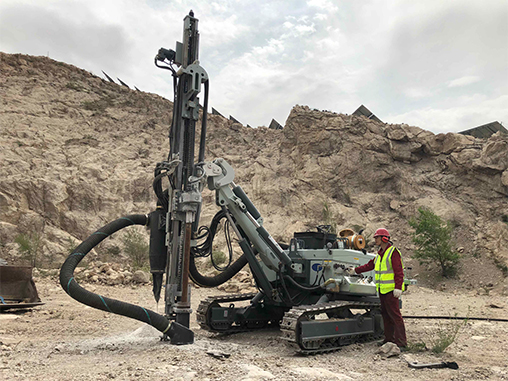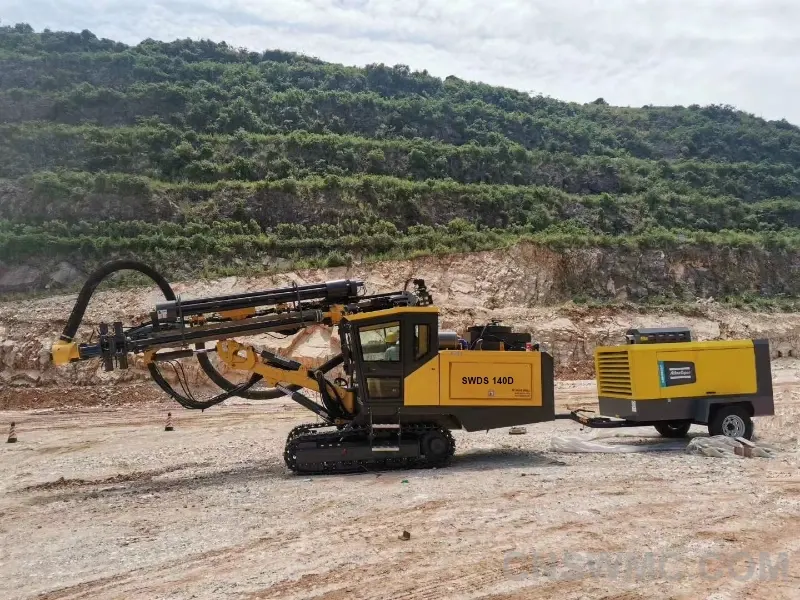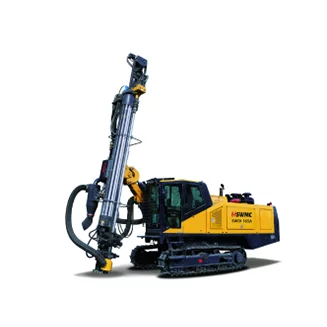Surface mining is a widely used method for extracting minerals and ores located close to the Earth’s surface. This mining technique is essential for industries such as construction, energy production, and manufacturing. In this article, we’ll explore the three main types of surface mining — open-pit mining, strip mining, and mountaintop removal mining — highlighting their processes, advantages, and environmental impacts.

1. Open-Pit Mining: The Most Common Surface Mining Method
Open-pit mining is one of the most common and effective types of surface mining. It’s often used for extracting valuable minerals such as gold, copper, iron ore, and other metallic ores. This method involves the creation of large, terraced holes or pits in the Earth’s surface to access the desired mineral deposits.
How Open-Pit Mining Works
- Preparation: The mining site is cleared, and access infrastructure such as roads and utilities is established.
- Drilling and Blasting: Miners use specialized equipment to drill holes into the rock and blast it to break up the ore.
- Extraction: Once the ore is fragmented, it is extracted and transported to a processing facility.
- Rehabilitation: After mining, efforts are made to restore the landscape, minimize the environmental impact, and ensure long-term ecological sustainability.
Benefits of Open-Pit Mining
- Cost-Effective: Open-pit mining is less expensive than underground mining due to the scale and accessibility of the minerals.
- Higher Safety: Surface mining eliminates many underground risks like cave-ins and toxic gas exposure.
- Efficiency: Open-pit mining is ideal for extracting minerals from large, shallow ore bodies quickly and effectively.
Environmental Impact of Open-Pit Mining
- Landscape Changes: Large-scale excavation leads to the alteration of the surrounding terrain, leaving behind expansive pits.
- Water Pollution: Runoff from mining operations can contaminate nearby water sources, affecting aquatic ecosystems.
- Waste Disposal: The removal of overburden generates large amounts of waste, which must be managed to prevent environmental harm.

2. Strip Mining: Ideal for Coal and Shallow Mineral Deposits
Strip mining is another prevalent surface mining technique, mostly used for extracting coal, but also effective for other minerals like tar sands. This method involves stripping away the Earth’s surface in strips to expose the minerals beneath.
How Strip Mining Works
- Overburden Removal: Large machines such as drag lines and excavators are used to remove layers of soil and rock, exposing the mineral deposit.
- Ore Extraction: The minerals are extracted using heavy equipment and transported for processing.
- Land Reclamation: After mining, efforts are made to restore the land by refilling the area with soil and replanting vegetation.
Benefits of Strip Mining
- Cost-Efficiency: Strip mining offers lower operational costs than underground mining due to its use of large, specialized equipment.
- Higher Production: Strip mining can yield large amounts of ore quickly, making it ideal for extensive deposits near the surface.
- Safety: Surface mining techniques like strip mining are safer than underground methods, as they don’t pose risks like cave-ins.
Environmental Impact of Strip Mining
- Habitat Destruction: Strip mining often involves the removal of large swathes of forests and other ecosystems.
- Soil Erosion: The removal of vegetation increases the risk of soil erosion and land degradation.
- Water Contamination: Runoff from mining operations can lead to sedimentation and the contamination of local waterways.

3. Mountaintop Removal Mining: A Controversial Technique
Mountaintop removal mining (MTR) is a highly controversial form of surface mining, primarily used in mountainous regions to extract coal. This technique involves blasting off the top of a mountain to access the coal seams beneath, and dumping the debris into nearby valleys.
How Mountaintop Removal Mining Works
- Blasting: Explosives are used to remove the mountain's upper layers to expose the underlying coal seams.
- Coal Extraction: The exposed coal is then mined using large excavators and transported to processing facilities.
- Debris Disposal: The material removed during blasting is dumped into nearby valleys, often causing long-term ecological damage.
Benefits of Mountaintop Removal Mining
- Efficient Coal Extraction: Mountaintop removal mining is an efficient way to extract coal from mountainous regions, especially when traditional underground methods are not feasible.
- Cost-Effective: This mining technique can be more cost-effective than underground mining when large coal deposits are located in hard-to-reach areas.
Environmental Impact of Mountaintop Removal Mining
- Deforestation: Mountaintop removal mining results in the destruction of forests and other natural habitats.
- Waterway Disruption: The dumping of debris into valleys can fill streams and rivers, leading to water pollution and loss of aquatic biodiversity.
- Health Risks: Communities near MTR operations may face health risks due to airborne pollutants and contaminated water sources.
The Trade-Offs of Surface Mining Techniques
Surface mining technology is essential for extracting many of the minerals and ores used in modern industries, from construction to electronics. However, the three primary methods — open-pit mining, strip mining, and mountaintop removal mining — come with both benefits and environmental challenges.
- Open-pit mining is cost-effective and ideal for large ore bodies but causes significant landscape alterations.
- Strip mining offers a high extraction rate, particularly for coal, but can result in long-lasting environmental degradation.
- Mountaintop removal mining is efficient for accessing coal in mountainous areas but raises significant environmental and health concerns.
As the demand for natural resources continues to grow, sustainable mining practices will become more critical. New technologies and methods aimed at reducing the environmental impact of surface mining are being developed, offering hope for more responsible and eco-friendly mining in the future.
